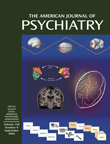When George Engel bestowed the biopsychosocial model on medicine and psychiatry in 1980
(1), he injected a powerful theme into professional discourse, one that still reverberates strongly. This model serves primarily to guide comprehensive physician-patient interviews and treatment. It also recognizes that biological, psychological, and sociocultural factors all interact and bear on the pathogenesis and course of most disorders in medicine. Because the biopsychosocial ideal focuses on holism and captures the multifaceted nature of illness and disease in a single word, the model and the term continue to enjoy broad appeal. As knowledge about biological and psychological development, sociocultural factors, and their interactions grows, so too does the model’s evidence base. Many educators rally around it to fend off attempts to define psychiatry more reductionistically as a specialty almost exclusively confined to biomedicine and neuroscience.
This volume intends to offer medical students a brief textbook emphasizing the importance of biopsychosocial thinking. Although the goals are laudable, their execution unfortunately falls short. The book begins and ends with good chapters, with case examples to describe basic concepts, and a brief biopsychosocially oriented interview with a depressed patient. But the author undermines his basic goals by the manner in which he organizes and presents material between these points. Part 2, Biological Models, contains chapters briefly describing psychotic disorders, mood disorders, anxiety disorders, substance abuse disorders, and personality disorders and their biological treatment. Part 3, Psychological Models, doesn’t address the disorders per se but includes chapters on Freud, the ego, object relations theory, the self, and several learning and cognitive theories. Part 4 contains chapters on the individual in society, stringing together short sections on diverse topics such as attachment, stress, interpersonal psychology and violence, group psychology, and ethical and legal considerations. However, it only lightly touches on family issues and other major social determinants.
From my perspective, the book’s major weakness is ironic: it fails to adequately integrate biological, psychological, and social perspectives into holistic discussions of disorder-specific pathogenesis and treatment. Given the book’s stated intentions, why are all the psychiatric disorders presented under a biological heading? Furthermore, the book lacks discussion of the more recent biopsychosocial models of the mind that currently excite my students—psychoneurosociodevelopmental models such as those suggested by Antonio Damasio, Gerald Edelman, Howard Gardner, Allan Schore, and others; models derived from evolutionary psychology; and social origins models concerning psychiatric disorders such as those developed by George Harris and his collaborators. These contributions all significantly strengthen biopsychosocial thinking since Engel’s initial presentation.
To sum up, the biopsychosocial model seems to be alive and well, but I wish the author had provided a better home for it. The author’s valuable concept could be better served by presenting biological, psychological, and social background material at the beginning of the book. Then, specific data from each domain might appear as each disorder is presented, so that discussions could focus on how these factors interact with one another to ultimately contribute to each disorder’s appearance and treatment.

